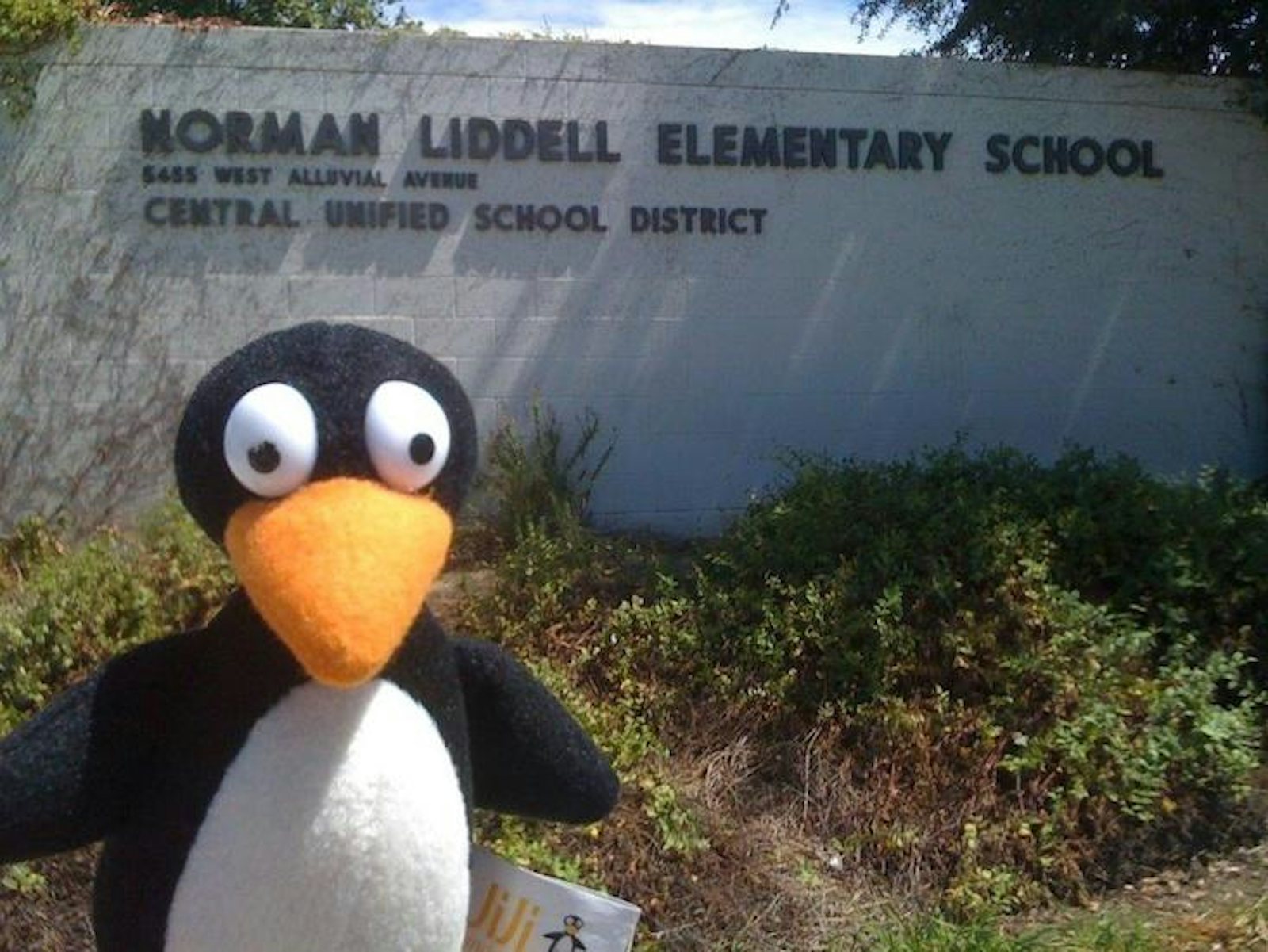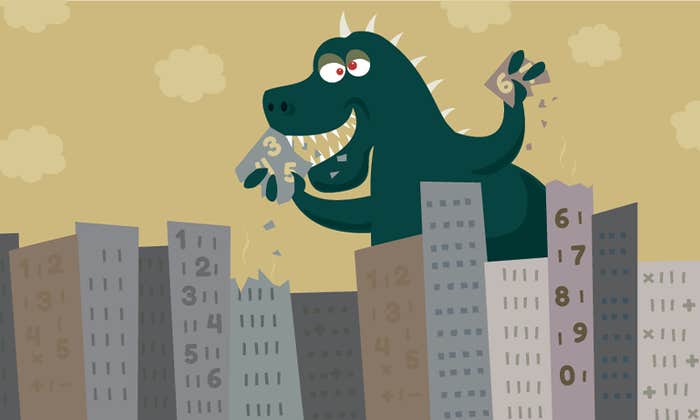Matthew Peterson is a pretty inspirational guy. As a dyslexic child he found math class difficult, so as an adult he resolved to totally change the way math is taught. After completing his studies in biology, electrical engineering, and Chinese language and literature at the University of California, Irvine, Peterson co-founded the nonprofit MIND Research Institute and set about developing “Spatial Temporal (ST) Math,” a computer game-based method of teaching that doesn’t rely on language as a medium. Instead it uses spatial-temporal reasoning—the ability to move stuff around in your mind and work out how it fits together. Proponents point to recent findings in neuroscience and education research—showing that early music training can enhance spatial-temporal reasoning, for example—as justification for this shift.
In the nearly two decades since the Institute was set up, ST Math has been rolled out across 45 states in the United States, and is being used by over a million K-12 students. JiJi, the cartoon penguin that leads children on their wordless journey through ST Math, has apparently helped double, sometimes even triple, growth in math proficiency in participating classes. Evaluations such as the independent assessment carried out by educational research agency WestEd appear to confirm the program’s positive effects.
The key to the ST Math’s success, according to its creators, is that it is unencumbered by the constraints of language. Words and symbols are kept to a minimum, with shapes and pictures used instead to represent concepts as abstract as quadratic equations, and informative feedback helping children to understand when and how they have gone wrong. In his 2011 TEDx talk, Peterson emphasizes the benefits their methods can have for kids speaking English as a second language or those who, like him, have language-learning difficulties. But he also stresses that he wants the program to be universal. “The idea worth spreading here is that all students, not just those with special needs, can benefit profoundly from opportunities to learn without any words at all,” he says.
It sounds too good to be true, and maybe it is. Teomara Rutherford, an educational psychologist at North Carolina State University, is leading a project to assess the efficacy of ST Math, and in 2014 she co-authored a paper that placed a question mark over the MIND Research Institute’s claims. In a trial of the program’s effects on children from 52 schools, Rutherford and her team found no significant effect on mathematical ability. Moreover, the kids’ prior educational and English language abilities seemed to make no difference to their outcomes.
Rutherford’s study was more thorough than previous attempts. It was randomized. It took place over two years, and on a large scale. These factors allowed Rutherford and her colleagues to make causal inferences where previous assessments had found correlations, and their results—unfortunately—did not produce the kind of results described by Peterson.
Everyone agrees that something needs to be done about math education in the U.S. The most up-to-date global rankings show its quality languishing way below much of Asia and Europe, and apart from anything else the U.S. just isn’t getting much bang for its buck. Slovakia spends roughly half the amount per student as the U.S., and yet achieves similar mathematical outcomes. There is a serious concern that American students simply do not possess the math skills to sustain the nation’s future economy, which will be increasingly math-grounded. The U.S. Department of Commerce predicted an increase of 17 percent in STEM (science, technology, engineering, mathematics) occupations in the decade leading up to 2018, compared to just 9.8 percent growth for non-STEM occupations.
In this climate, it’s easy to see why there is a desire for a silver bullet—something capable of instantly boosting student attainment levels. After all, no one seriously suggests that students in China or Finland are naturally smarter; U.S. kids just need their dormant talents somehow unlocked.
Computer-based programs including ST Math have been popular solutions in recent years—perceived as providing significant benefits with low investments of time and money. And yet meta-analyses and government reports have not confirmed these assumptions. Despite the abundance of computer-assisted interventions on offer, and the millions of dollars spent on them every year, the U.S. Department of Education’s What Works Clearinghouse has not listed a single one as having positive or even “potentially positive” effects for elementary school mathematics.
“We know from research on popular education myths, like Learning Styles, that educators may rely on assumptions rather than research in making decisions for their classrooms and schools,” says Rutherford.
Nevertheless, there are plenty of researchers trying to work out what the education system does need, analyzing the effects of different curricula, methods, tools, and class environments to try and distil a winning formula. “I will say that the use of research in the effort to improve education has greatly increased in the previous 15 years or so in the U.S.,” says John Rice, one of the co-authors of the WestEd ST Math evaluation, highlighting the fact that Congress has recently made certain evidence standards necessary for federally funded education programs.
“Among the things we know from this research are that students need strength in both conceptual and procedural aspects of mathematics,” says Rutherford. “And their motivation for mathematics is important: They need to believe they can be successful and they need to recognize the role of mathematics in their lives.”
It’s tempting to look to more successful nations as models. Observers have pointed out how countries like Japan, which fosters the belief that success comes from hard work, surge ahead in math, while the shortcomings of U.S. students are blamed on innate ineptitude (“I’m just not a math person”). This has been linked with “math anxiety,” a negative emotional reaction when faced with a mathematical problem, which—according to the Organisation for Economic Co-operation and Development, an intergovernmental organization consisting of 35 member countries dedicated to stimulating economic progress—results in grade disparities between countries roughly equivalent to a year’s worth of school.
Yet math anxiety still exists in high-performing nations, so while efforts to control math anxiety with sedative music or electrical currents applied to the brain are intriguing, even their success would not necessarily mean an end to the U.S.’s math problem.
“With any program, my advice would be to consider all the evidence that is available and also consider if the research on or evaluations of the program took place in contexts similar to the education setting where it is being considered,” says Rice. “Answering the question, ‘Is there evidence that the program makes a difference?’ is extremely important but so is answering the question, ‘For whom and in what conditions does the program make a difference?’” Rutherford says: “Conversations between developers and educators are key. Both groups are needed to implement effectively and to work toward the common goal of helping students.”
ST Math has a great story. The idea is appealing, kids seem enthusiastic about the approach (and the penguin), and Peterson’s background makes him a perfect spokesman. The method shows that math can be taught differently—and perhaps more intuitively than traditional ways for the more visual-minded students. However, it’s important that the program is not regarded as a panacea by either the developers—who are at pains to emphasize the scientific underpinnings of their work—or the schools implementing it. This problem might have more than one solution, and oversimplifying things risks leaving behind kids at a time when they are more in need of quality math education than ever before.
Josh Gabbatiss is a freelance writer based in London. He’s written for the BBC, New Scientist, Hakai Magazine, and others. Follow him on Twitter @Josh_Gabbatiss.
Watch: Robbert Dijkgraaf, the director of the Institute for Advanced Study, explains the mistakes we make in teaching science.































